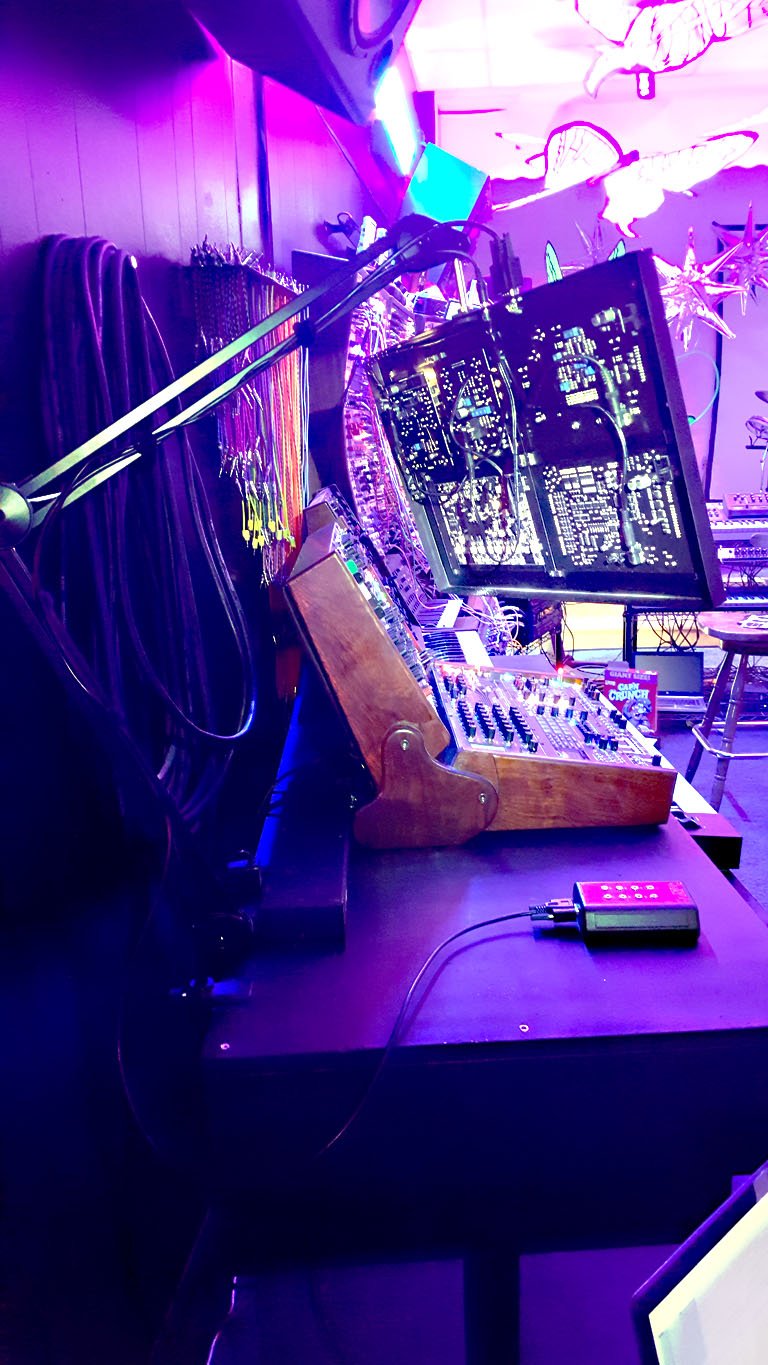Folktek modules/instruments are unique in their creation from other current eurorack design philosophies. There are strong design elements that are deliberate and there also is a sense of general functionality, but as you use them, your mind wanders easily and you can coax the ‘engineer’ out, to add to and possibly ‘re-design’ the work flow. I only have worked with Folktek eurorack modules so far, but I am always interested with what they come up with.
My initial jump into the Folktek world were acquiring the Conduit and Matter modules. There is now a second version of Matter, but these are the first gen versions. I used the pair in my larger system, for a while, but I found I did not integrate them into my other euro modules as much. The little headers and jumper wires are more familiar territory to bread boards and test benches. Then I started to use the Mescaline system and decided it would be cool to combine those first gen modules into one dedicated system.
Folktek are made with PCB’s as both the front panels and secondary panels. This makes them very light weight. With the popularity of podcasters, the ‘floating’ microphone stands are now pretty cheap. So I fabricated a light weight .050 aluminum bracket. I added an 8 jack breakout box with the corresponding jacks on the frame, allowing signal I/O. The arm is rated for 4-5 lbs and it responds well to moving it around using two hands.

With this flexibility I now find it easier to tweak the pots on the back of the modules. This is something Folktek encourages. Again, this is a different approach from most eurorack module manufacturers.

I have found this approach refreshing and unique and allows me to easily jump into the Folktek world. Also as an arm chair engineer, I can test out new components immediately!!! Just don’t forget your small breadboards when you feel the need to make large changes to your patch. They come in very handy.

